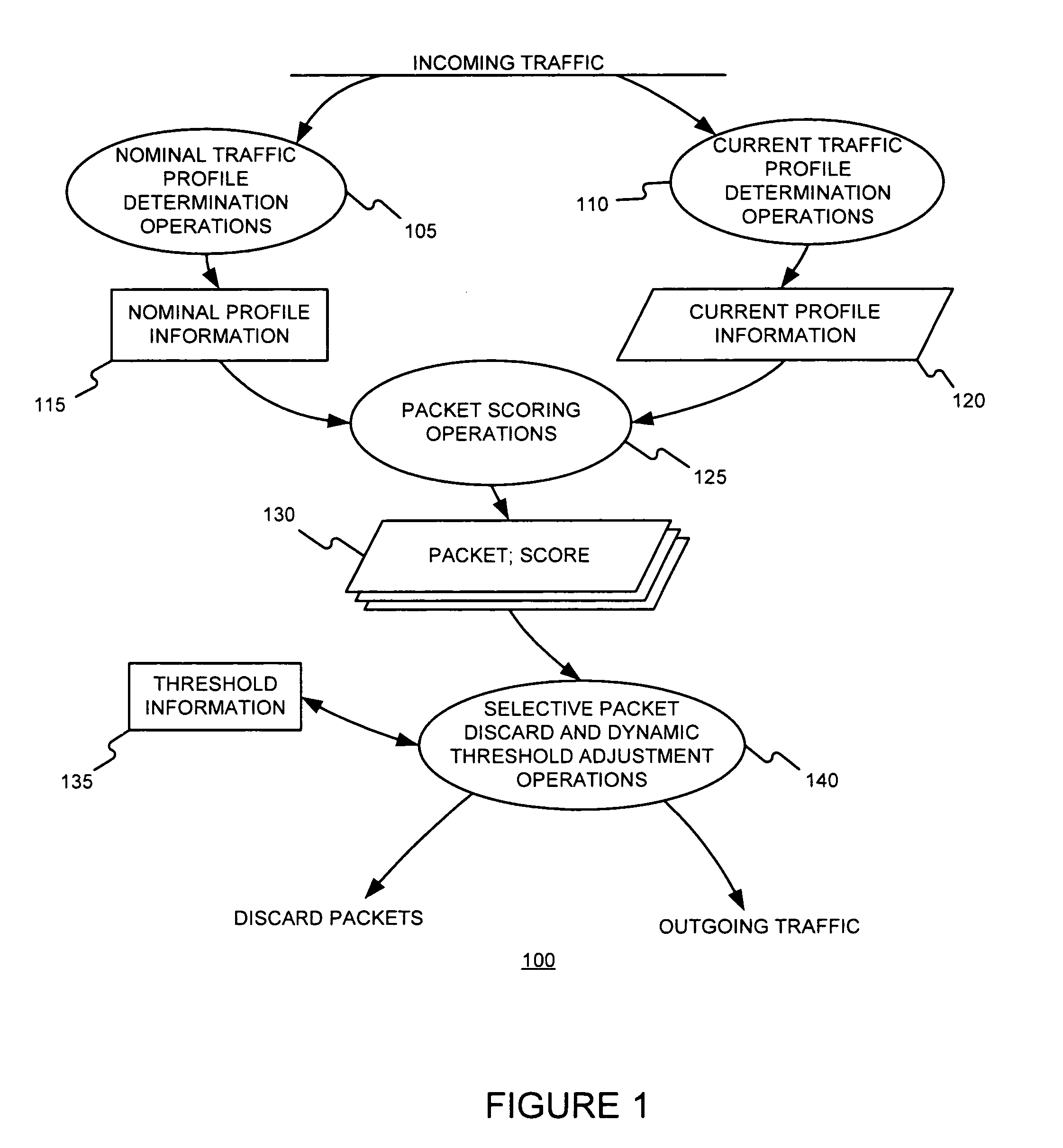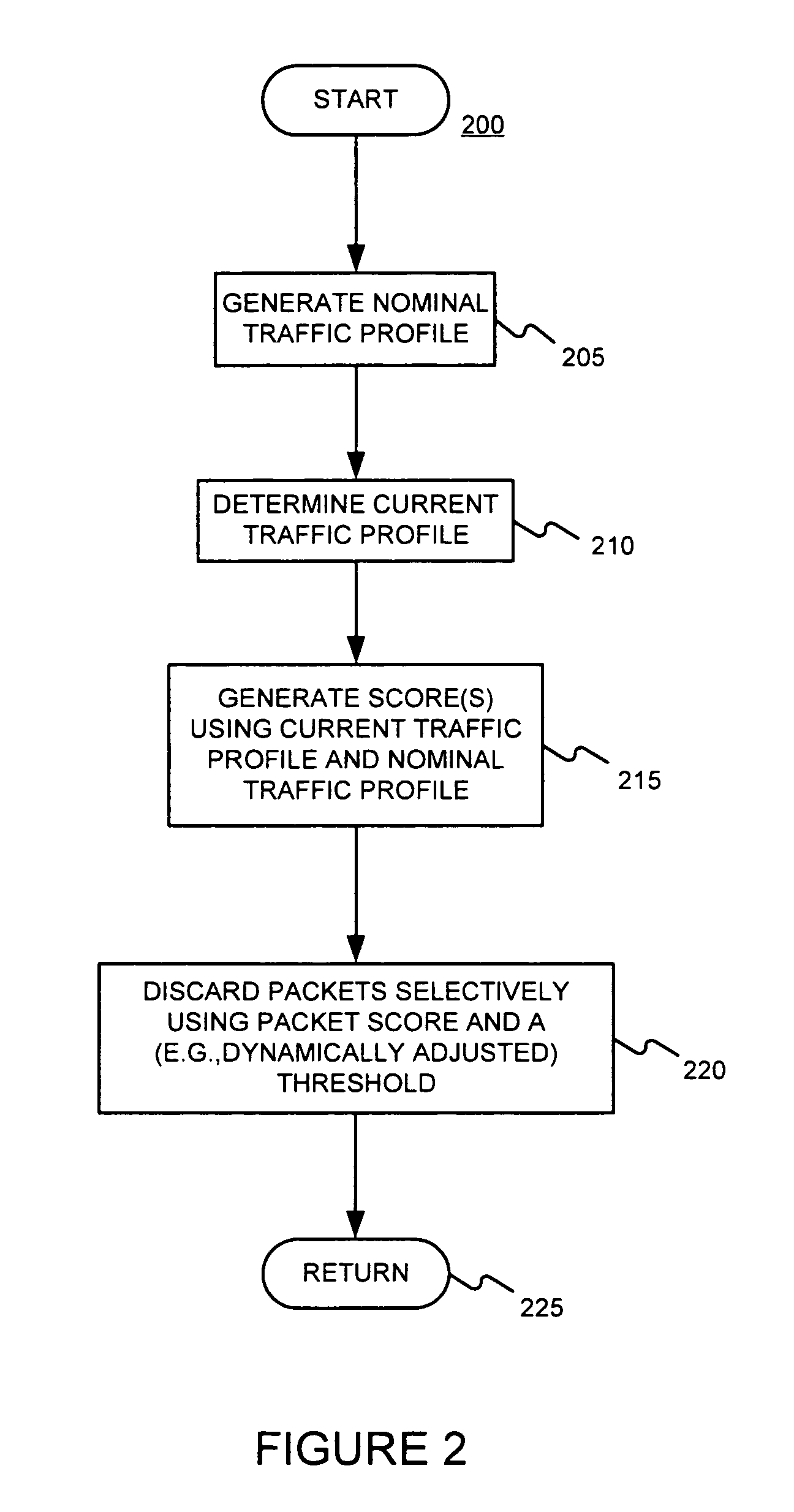Providing a high-speed defense against distributed denial of service (DDoS) attacks
a distributed denial of service and high-speed technology, applied in the field of internet security, can solve the problems of complex implementation, inability to fully automate packet differentiation and discarding, and new types of ddos attacks, and achieve the effect of effective control of communications traffi
- Summary
- Abstract
- Description
- Claims
- Application Information
AI Technical Summary
Benefits of technology
Problems solved by technology
Method used
Image
Examples
first embodiment
[0056]A first embodiment consistent with the present invention provides a Leaky-Bucket (LB) based scheme which does not need to calculate a measured profile histogram, and which does not need to calculate any kind of histogram in real-time. Instead, it assigns an LB for each attribute value and determines a score for each attribute value which is a function of the number of overflows of the associated LB. The scorebook can be readily obtained by keeping track of the overflow counts. The operation of the LB-based scheme is quite simple, only involving memory access and count value updates. LB-based schemes are described in §4.2 below.
second embodiment
[0057]A second embodiment consistent with the present invention provides a scheme—called Attribute-Value-Variation (AV)—which improves the accuracy of packet discarding (the capacity to distinguish legitimate packets from attacking packets, and discard the attacking ones with as much accuracy as possible), as compared to the CLP-based and LB-based schemes. This is achieved by using an attribute value variance instead of simple attribute values as an LB-based scheme threshold. AV is less complex than the CLP-based scheme, but more complex than the LB-based scheme. The complexity comes from calculating the variance for each attribute value during the nominal profile.
[0058]As an alternative solution to the problem of fast changing DDoS attacks, embodiments consistent with the present invention might use a Proportion Integration (P / I) control. The overall control system is simpler than the CDF / load-shedding scheme, with lower computational and memory requirements. Further, P / I provides ...
PUM
 Login to View More
Login to View More Abstract
Description
Claims
Application Information
 Login to View More
Login to View More - R&D
- Intellectual Property
- Life Sciences
- Materials
- Tech Scout
- Unparalleled Data Quality
- Higher Quality Content
- 60% Fewer Hallucinations
Browse by: Latest US Patents, China's latest patents, Technical Efficacy Thesaurus, Application Domain, Technology Topic, Popular Technical Reports.
© 2025 PatSnap. All rights reserved.Legal|Privacy policy|Modern Slavery Act Transparency Statement|Sitemap|About US| Contact US: help@patsnap.com



